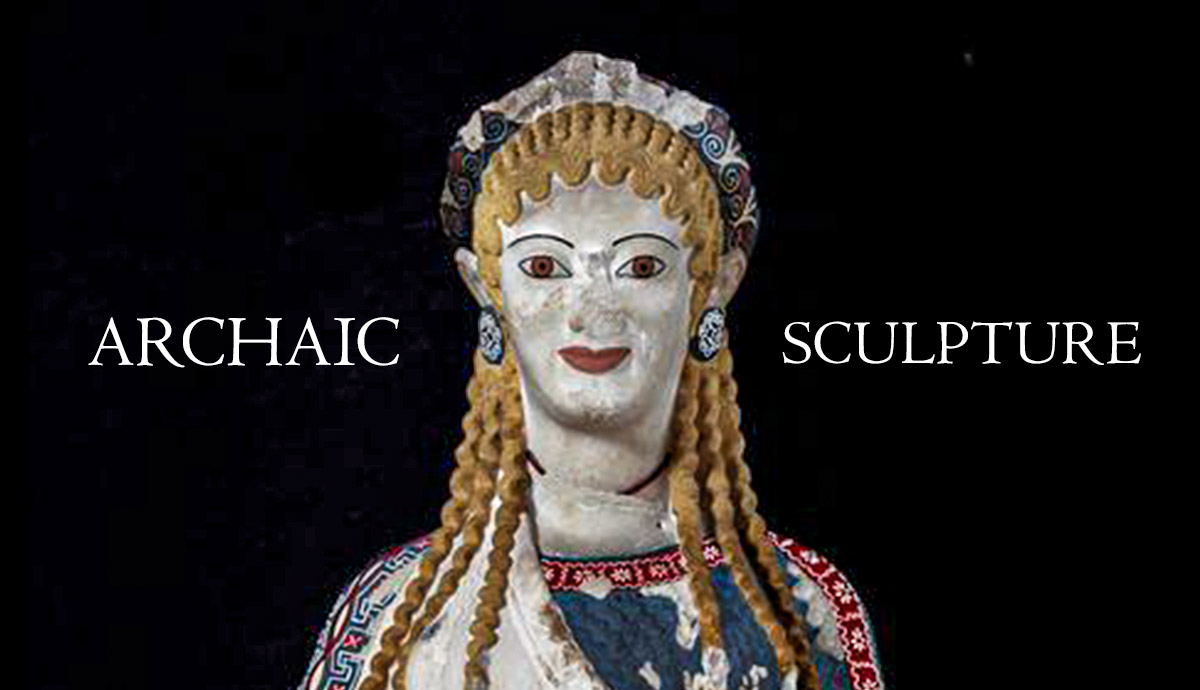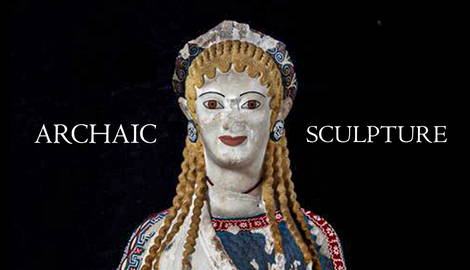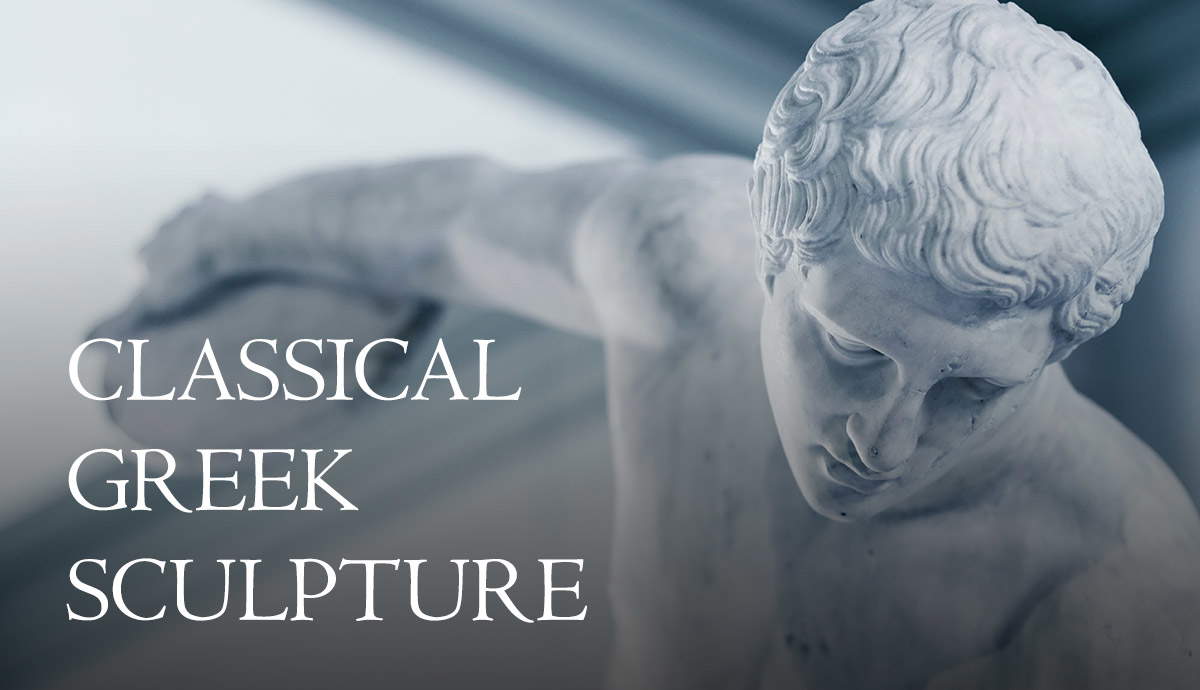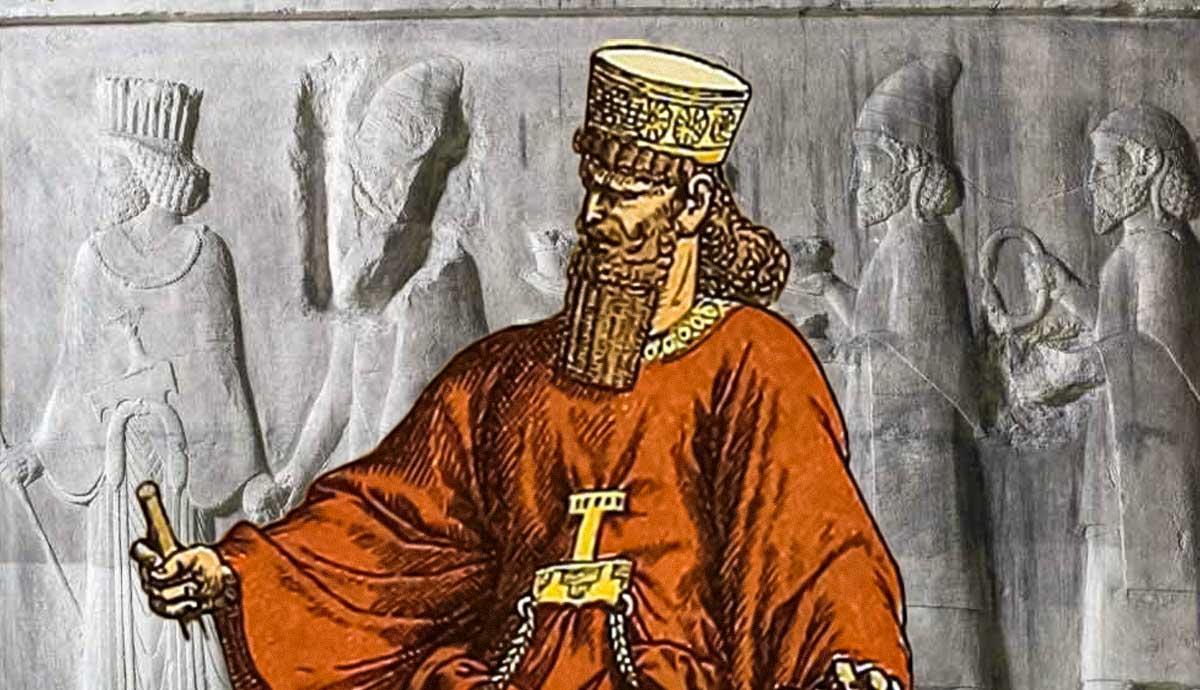
Ancient Greece is known for its magnificent statues, the craftsmanship of which is still envied by modern artists. The style in which Greek statues were made was not monolithic but rather a gradual evolution over several centuries, with each new generation of artists building on the achievements of previous generations. The Archaic Period, which lasted from the end of the 8th century CE to the start of the 5th century CE, represented a major step in statue evolution.
Emergence of the Archaic Period

The Bronze Age Collapse, which occurred around 1200 BCE, was a catastrophe for civilizations centered around the eastern Mediterranean. In Greece, the mighty empires and trade networks of the Mycenaean and Minoans were snuffed out, and their once vibrant artistic expression fell by the wayside. In the aftermath of the calamity, Greece was gripped by the so-called Dark Age, a time span that lasted until around 800 BCE, during which literacy was forgotten, monumental constructions were halted, and society was forced to start anew.
The first style of art to emerge from this dark era is classified as the Geometric Period, with a focus on abstract statues and sculptures depicting humans, animals, and mythological creatures in highly stylized forms.
This era would gradually give way to the Archaic Period, which began around the year 800 BCE and lasted until the end of the Persian Wars in 479 BCE. This era saw the emergence of many important innovations that would influence Greek culture far into the future. These included the rise of the city-state as the prime political organization, Pan-Hellenic athletic competitions such as the Olympics, the beginnings of epic poetry, such as the works of Homer, and a return to international trade and colonization, which had become stagnant during the Dark Ages. These traders and colonists encountered many other cultures, particularly in the Near East and Egypt, which not only saw the movement of goods but also ideas, including new ways to create art.
It was during the Archaic period that art began its evolution towards the masterworks of later eras. By utilizing artistic styles found in the Near East and Egypt, the abstractions of the Geometric Period were replaced by much more natural and true-to-life depictions of the human form.
The Kouros

The most striking characteristic of artwork during the Archaic Era was the development of monumental statues. As was the case in later eras, one of the main subjects for the art was the human body. Borrowing from Egyptian statues, these sculptures were broadly divided into two distinct types. Kouros (plural kouroi), statues of nude young males, and Kore (plural Korai), fully clothed young females, though there are exceptions to the state of dress in some cases.
The introduction of Kouros into Greek artistic expression began in the 7th century BCE, in particular after contact and trade with Egypt was established. Following Egyptian trends and to a lesser extent, Mesopotamian statues, the Kouroi share similar characteristics. The subjects are all standing upright, with rigid postures. The shoulders and hips are all in alignment, facing forward, with no bending or twisting shown. Likewise, the head and neck are also aligned, and virtually all Kouroi are orientated to face straight ahead. The arms are symmetrical, usually straight down at the sides of the figure, hands clenched into fists. The feet are usually together, though occasionally, one foot is slightly in front of the other, with the knees locking the leg into a straight line.
The Kouroi are also, for the most part, nude, showcasing their musculature. The proportions of these statues are generally very lean, with clearly defined muscles. Unlike statues in later eras, however, the muscle mass of the statues is limited, and the impressive physiques that would come to define Greek statues had not been established as a cultural norm. The lighter build was probably used to convey a sense of youth, an idea further reinforced by the lack of beards, which were a sign of maturity and adulthood.
The Kore

The counterpart of the Kouros was the Kore. These young women were almost always portrayed as fully clothed. Like the Kouros, the Kore were rigid, with unnaturally inflexible postures. Their feet, hips, shoulders, and heads all faced directly forward. The most striking difference between the Kouros and the Kore was the clothing the figure wore and the attention to detail that was given in the sculpting process.
The Kore are clothed in garments called a peplos, or a chiton, which were rectangular lengths of fabric that would be draped over the shoulders and belted into place. In the earliest Kore, the feminine figure would be hidden by the garment, with much of the detail conveyed by grooves cut into the stone, representing folds or pleats of cloth. In later versions, the Kore would be more naturalistic, with anatomical features such as the shape of the hips, buttocks, or breasts being visible. The hair of the Korai also evolved over the centuries. Originally, the hair was a single mass carved on the head of the statue. Over time, more and more emphasis was placed on detailing the hair, with individual braids that could run down to past shoulder length.
Still, unlike the male version, which emphasized the natural beauty of the subject, the female statues conveyed a sense of demure modesty, which strongly implies the strict gender roles of Greek society. Another difference between the Kore and the Kouros is the positioning of the hands. Many Korai did have their hands at their sides, though many are seen with one or more arms lifted up in front of the statue, most likely in a position of giving a religious offering.
Symbolic Meanings

Both the Kouroi and the Korai shared a feature that is perhaps the most iconic element of all Archaic Greek statues. It is what modern historians and archaeologists have dubbed the “Archaic Smile.” The Archaic Smile is a facial expression that shows upturned lips on an otherwise blank expression. It is by far the most common facial expression found on statues of the era. The purpose of the Archaic Smile is unknown. It has been theorized that it could show vitality and health, denote the aristocratic status of the person being depicted, or may have some other symbolic meaning that has been lost to time.
It is unclear exactly who the statues represented and why they were made to begin with. The statues were inspired by Egyptian statues, which represented gods or other religious figures. Their Greek counterparts’ purposes were probably more complex. There is some indication that there was a religious significance to the Kouroi. Many scholars are of the opinion that they may represent a particular god, most likely Apollo. Likely, the Korai were also made with religious intentions due to their head position, which could indicate giving a religious offering or giving thanks for a divine blessing. They may have represented young women in the service of a deity.
It is also possible that the purpose of the Kouroi was not divine in nature. They may have been statues representing athletes or some other prominent person in a community who was to be commemorated for their achievements. It is also possible that there was no direct significance to their design or creation. They may simply have been representations of something beautiful for its own sake without any further significance, representing the start of aesthetics in art. Unfortunately, the exact reasoning has been lost to the ages.
What Did Archaic Sculpture Look Like?

Greek statues in the Archaic period were made primarily from marble or limestone. They could be massive, with some examples over ten feet in height, though they could be a more realistic five to six feet in height. In addition to the difficulty in carving them, their immense weight made them difficult to transport. Therefore, they were a sign of economic status, found in the homes of the wealthiest members of society or in a temple or cemetery, which were places of profound significance for the community at large.
Most statues today are bare stone and are white or light tan in color. This was not the case at the time. After the carving of a statue was complete, the statue would be painted. Many statues from the Archaic era and other eras have been discovered with remnants of their paint still on the surface, though for the most part, the paint had worn away over the centuries. There is some conjecture as to what the painted statues looked like, with some scholars favoring more subdued hues, while others believe that they would have been brightly painted, appearing almost garish to modern audiences. Unfortunately, the truth, like many aspects of the era, has been lost to history. Since the statues were painted, the quality and color of the stone was not a major priority.

In addition to the paint, it is also highly likely that the statues were decorated. One example of a Kore, found at the Acropolis and dated to around 530 BCE, has indentations on the shoulders of the statue. This aligns with the broaches that held a peplos in place, indicating that there were actual metal brooches placed there. They could also be decorated with jewelry, wreaths, and other adornments to further beautify the statue. Other items may also have been incorporated into the design, such as an outstretched hand holding an offering of some sort.
As time went on, Greek artists placed a greater emphasis on proportion and dynamism. They were able to make the statues appear more lifelike, and the rigid poses became more flexible, showing bent limbs, more natural postures, and positioning that would convey a sense of movement and dynamism. The Kouroi and Korai would evolve into the much more fluid statues of the Classical Era.










